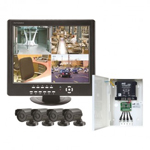Lighting constitutes an incredible 20% of worldwide energy consumption, so it likely also accounts for a large part of your business’s electricity costs – and with energy costs rising, most homes and businesses are looking for ways to make savings. While spending money investing in an LED conversion (switching your existing light bulbs to LED bulbs) may seem like you’re spending money unnecessarily, but you’ll end up making huge savings and doing better for the planet at the same time. Let’s take a look at the other advantages of converting to LED lighting.
Advantages of LED conversion
LED lighting products have been intensely developed over the past few decades, with lighting designers exploiting the flexibility they offer, and they’ve steadily decreased in price too. The lower cost and enhanced look of LED lighting solutions isn’t the only advantage that converting offers.
- Energy-efficiency – LED technology is extremely energy efficient, using up to 90% less energy than incandescent lighting (including halogen styles that have now been banned) and 60% less than old fluorescent lighting.
- Lifespan – LED light bulbs last up to 50 times longer than a traditional light bulb, so you spend far less time and money in maintenance and can reduce your stock of spare light bulbs.
- Temperature – Because LED lighting projects little or no IR heat in its beam, converting to LED reduces fire risk and potentially, air conditioning costs too. LED spotlights can be useful for lighting heat-sensitive items such as works of art, or food.
- Durability – LED lighting is resistant to shock and vibration and performs reliably at cold temperatures (typically down to -20°C), making it a logical choice for outdoor lighting.
- Environment- In addition to lower energy consumption, LED lighting has a lower environmental impact too – most LEDs can be recycled at the correct facilities, but more importantly, no mercury is used, so if the bulb or unit is disposed of with regular waste, it won’t contaminate landfill sites.
- Battery – Due to the smaller amount of power required, LEDs are suitable for emergency lighting and solar styles.
- Adaptability – Many LED lights, particularly smart models, provide greater flexibility than traditional types, with the ability to change the colour temperature (perfect for office spaces where cool white is better in the morning and warm white in the afternoon or evening) as well as the brightness of the light.
How much can I save by converting to LED?
Great question – and the answer is one you’ll like! The combination of longer lifespan and lower energy consumption guarantees a return on investment, whether you’re talking one bulb or a thousand.
Switching to LED bulbs saves money in the home – the Energy Saving Trust estimates around £13 per year per 100 watt incandescent bulb replaced – which adds up to a significant saving throughout the home. In a business, where lighting is kept on for longer hours and bulb changes have typically been much more frequent, an LED conversion can save thousands of pounds per year.
Making the change to LEDs has the potential to save your business thousands of pounds, and even a 20% reduction in your energy costs could provide the same benefit as a 5% increase in sales.
LED conversion case study
To give you an idea of how much you can save, here’s an example scenario calculating the benefits of an LED conversion. In this example, the bulbs are installed in a stairwell, and are switched on permanently, 24 hours a day.
Pre-conversion costs
Based on 20p per Kw/H for non domestic use as published by the Government Statistical Data June 2022

Post conversion running costs
Based on 20p per Kw/H for non domestic use as published by the Government Statistical Data June 2022

As you can see, annual running costs are reduced by £19,053 per year. Even with the increased cost of the bulbs, there are still overall savings in excess of £11,000 to be made – think of what else you could spend those thousands on!
Having made a strong case for conversion based on running costs, the only objection left is that of the initial outlay to buy the replacements. But the cost of LED bulbs and lights has reduced and is now comparable with traditional incandescent bulbs.
Lighting controls such as smart lighting with Wi-Fi connectivity, dimmers, motion sensors and timers can substantially reduce energy costs and when you’re tackling an LED conversion, this is a great time to install these. These controls also increase bulb lifespan, further reducing maintenance costs.
LED conversion conclusion
The upfront cost of tackling an LED conversion shouldn’t be one that deters businesses from making the switch, since LED lighting offers a large number of benefits. A substantial reduction in energy bills is the main reason to change to LEDs, but the reduction in maintenance costs can also be significant, depending on the size and nature of the building – and allows your maintenance team to work more efficiently too.
Reducing the carbon footprint of your business by switching to LED is a worthwhile endeavour, and as part of wider efforts to support the environment, is an initiative that customers will appreciate – and since halogen lights have now been banned in the UK, replacing existing bulbs with LEDs just makes sense.
An LED conversion can be achieved with very little disruption to your business. Lyco Direct have helped some of the UK’s biggest companies convert to LED. For larger projects, we offer flexible finance schemes that allow you to offset payment with energy savings.
If you’d like free expert advice on converting your business’s lighting to LED, please give us a call on 0345 646 1133 or send us an email and we’ll be happy to help.
Feeling inspired? Browse our full range of LED bulbs and LED lighting.
Looking for more information on lighting? Visit our Lighting Advice page.

Andrew Evangelidis Head of Buying
Andrew is an experienced buying professional who takes an entrepreneurial approach to identify new lighting solutions and ensure Lyco have first-to-market ranges for our customers. Having previously worked for well known brands such as Wickes, Carphone Warehouse and Toys R Us, Andrew has now turned his hand to sourcing commercial lighting and ensure our customers receive top brand quality products at marketing leading prices. He manages a team of commercial and decorative buyers who travel the world finding new products that our customers don’t even know they need yet.



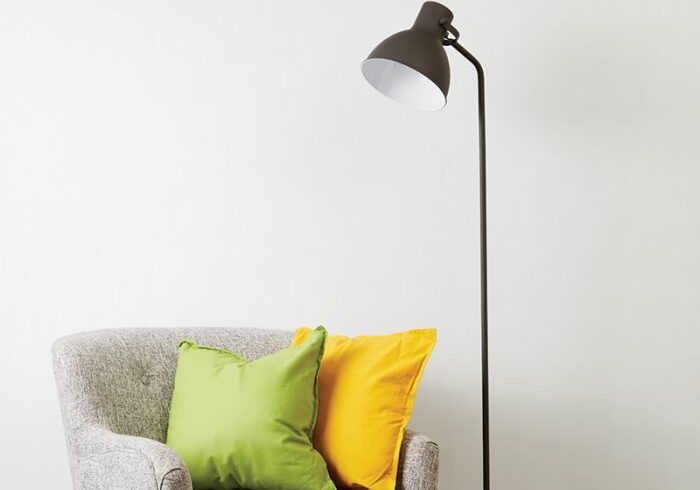




 rating also allows use along outdoor escape routes leading to safety points. Again, the directional nature of LEDs means very little light is spilled in spotlighting applications.
rating also allows use along outdoor escape routes leading to safety points. Again, the directional nature of LEDs means very little light is spilled in spotlighting applications.








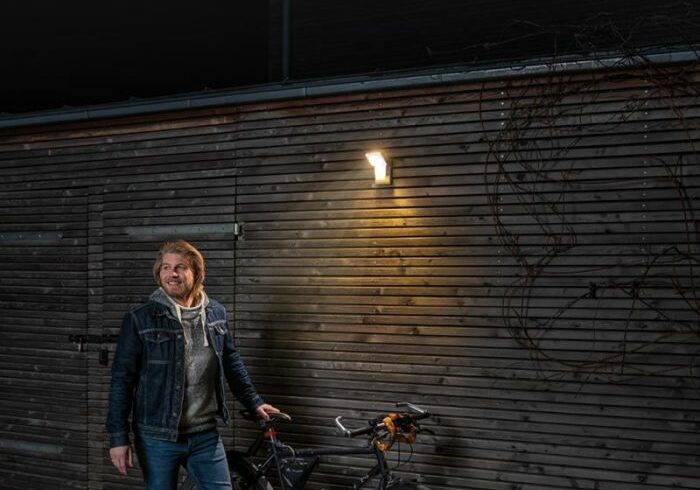
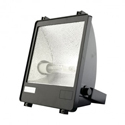 European Standard 12464-2 gives useful advice on car park lighting. It recommends surface illuminance of at least 5 lux for car parks with low traffic and 20 lux for busy parking zones. The size of the car park will influence your lighting choice. A light mounted high up covers more ground and avoids glare, but it needs to emit more light to maintain intensity. The distance covered by a floodlight is roughly twice its mounting height.
European Standard 12464-2 gives useful advice on car park lighting. It recommends surface illuminance of at least 5 lux for car parks with low traffic and 20 lux for busy parking zones. The size of the car park will influence your lighting choice. A light mounted high up covers more ground and avoids glare, but it needs to emit more light to maintain intensity. The distance covered by a floodlight is roughly twice its mounting height.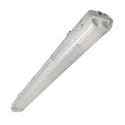
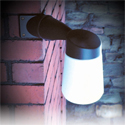 Any obstacle or change of direction along a path demands good lighting. Adequate corner lighting helps prevent accidents. The Eterna
Any obstacle or change of direction along a path demands good lighting. Adequate corner lighting helps prevent accidents. The Eterna  The
The 
